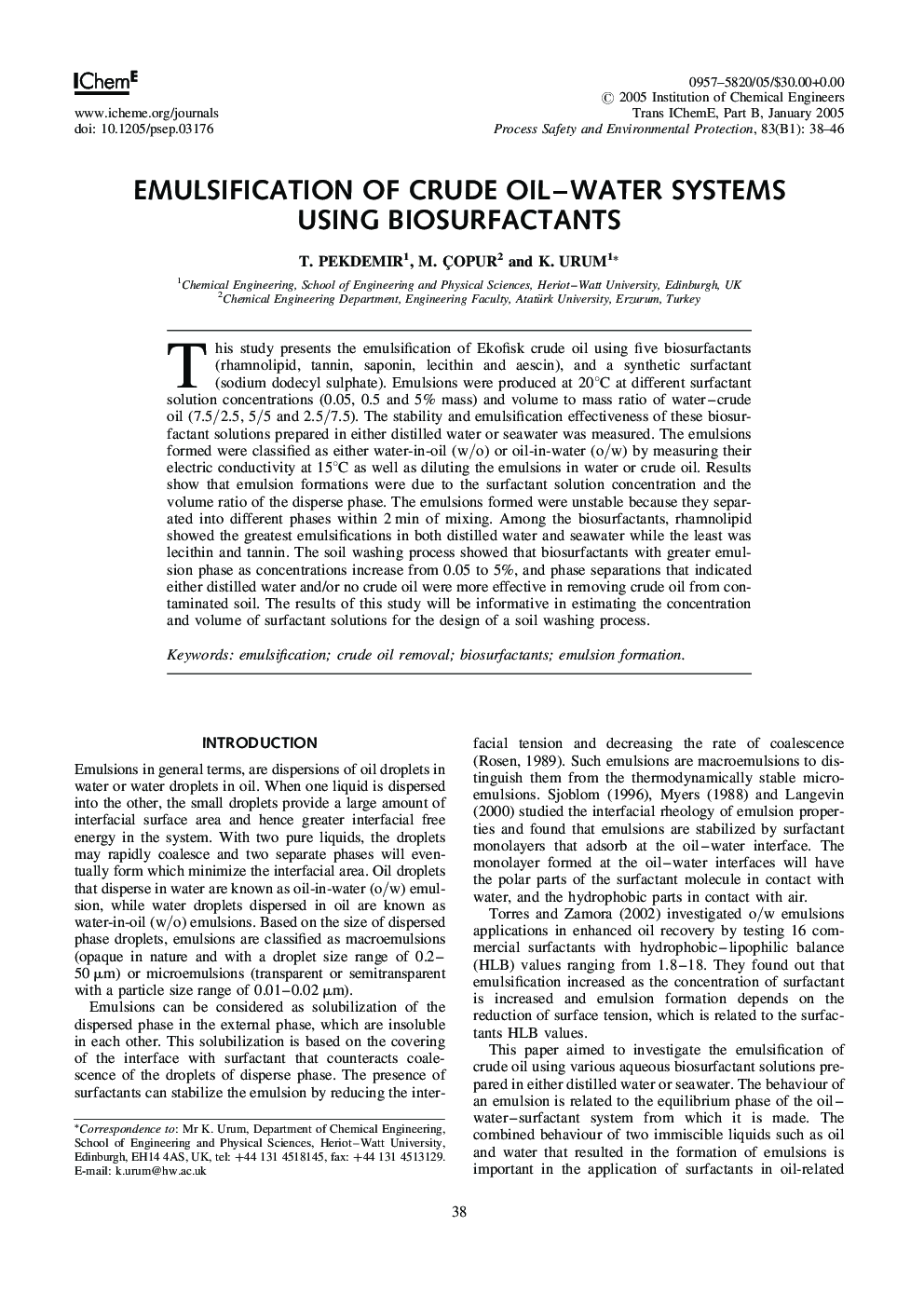| Article ID | Journal | Published Year | Pages | File Type |
|---|---|---|---|---|
| 10374013 | Process Safety and Environmental Protection | 2005 | 9 Pages |
Abstract
This study presents the emulsification of Ekofisk crude oil using five biosurfactants (rhamnolipid, tannin, saponin, lecithin and aescin), and a synthetic surfactant (sodium dodecyl sulphate). Emulsions were produced at 20°C at different surfactant solution concentrations (0.05, 0.5 and 5% mass) and volume to mass ratio of water-crude oil (7.5/2.5, 5/5 and 2.5/7.5). The stability and emulsification effectiveness of these biosurfactant solutions prepared in either distilled water or seawater was measured. The emulsions formed were classified as either water-in-oil (w/o) or oil-in-water (o/w) by measuring their electric conductivity at 15°C as well as diluting the emulsions in water or crude oil. Results show that emulsion formations were due to the surfactant solution concentration and the volume ratio of the disperse phase. The emulsions formed were unstable because they separated into different phases within 2 min of mixing. Among the biosurfactants, rhamnolipid showed the greatest emulsifications in both distilled water and seawater while the least was lecithin and tannin. The soil washing process showed that biosurfactants with greater emulsion phase as concentrations increase from 0.05 to 5%, and phase separations that indicated either distilled water and/or no crude oil were more effective in removing crude oil from contaminated soil. The results of this study will be informative in estimating the concentration and volume of surfactant solutions for the design of a soil washing process.
Related Topics
Physical Sciences and Engineering
Chemical Engineering
Chemical Health and Safety
Authors
T. Pekdemir, M. Ãopur, K. Urum,
